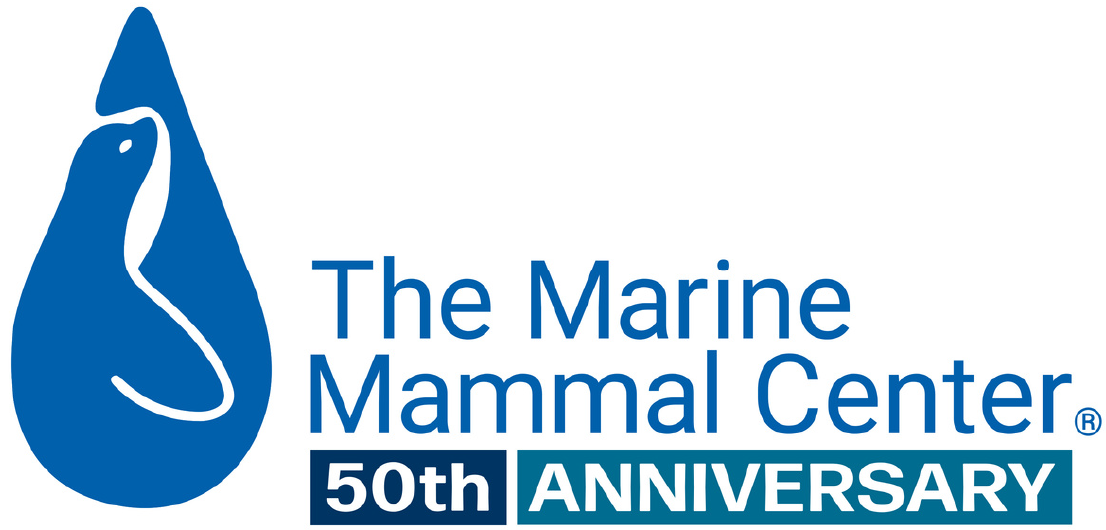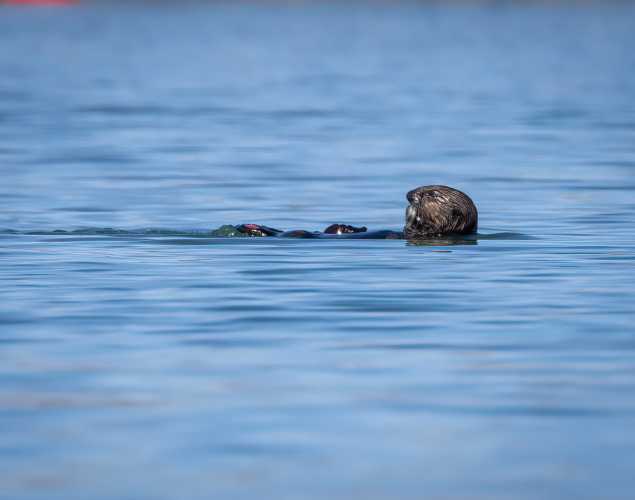
Entangled in Ocean Trash, Sea Otter Mooring Gets a Second Chance at Life
- Species conservation
- Entanglement
- Ocean trash
Mooring, a southern sea otter that was caught in a life-threatening entanglement, received expert care at our hospital and is now swimming free in her ocean home.
Rescue and Rehabilitation
In January 2025, a southern sea otter was found struggling in the water in Morro Bay, California, entangled in a mooring line (the strong rope used to secure boats). Fortunately, she was rescued by our partners at California Fish & Wildlife (CDFW) with support from Morro Bay Harbor Patrol and brought to The Marine Mammal Center for life-saving care.
The Center is one of the few organizations permitted to rehabilitate southern sea otters, a threatened species, with the goal of returning them back to their ocean home. Named Mooring, this entangled sea otter was initially transported to our
San Luis Obispo Operations triage facility just a short drive from the rescue location. Center and CDFW staff worked together to untangle the thick rope from her small body and assess the bleeding wound it left on her furry flipper. Sadly, this type of injury was cause for serious concern.
You see, without blubber to protect them from frigid ocean waters, sea otters rely on their thick, insulating fur to stay warm. They spend many hours and a large amount of energy each day grooming themselves as a crucial survival skill, coating their fur in natural oils and trapping air bubbles between the skin and layers of hair. This keeps the animal’s skin dry and protected, and their body temperature regulated.
Not only can entanglements be painful and make it difficult to swim and forage, but they can also prevent a sea otter from properly grooming and waterproofing its fur. Considering the severity of Mooring’s wound and the cold ocean conditions, she was brought to our main hospital in Sausalito for further treatment.
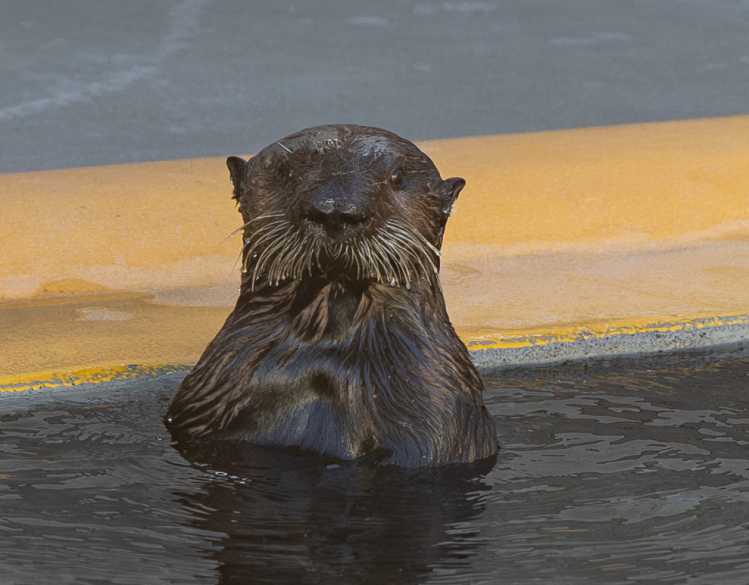
Increased amounts of trash are being found in our ocean, creating the alarming threat of entanglement for countless marine mammals. It’s thanks to your support that animals like Mooring can receive state-of-the-art medical treatment for a second chance. The Center’s veterinary team evaluated Mooring’s injured flipper using X-rays, and administered anti-inflammatories, pain medications and antibiotics to support her recovery.
Mooring was initially housed in our specialized otter tote, which is a dedicated area used to provide more intensive care for sick and injured sea otters. With a pool and dry haul-out area, our animal care experts can adjust the water temperature, water level and air temperature of the otter tote based on where an individual patient is in its recovery. This innovative rehabilitation tool helps reduce the risk of sea otter patients developing hypothermia and provides a safe space for them to groom and heal while their coat is compromised.

In addition to their luxurious fur, sea otters rely on a very rapid metabolism to stay warm. In fact, they eat about a quarter of their body weight every day! Mooring’s favorite foods included crabs and mussels, and support from people like you ensured this sea otter had plenty of hearty meals to keep her nourished.
Mooring also received special enrichment items to interact with as part of her treatment regimen. Items such as imitation kelp and food frozen in ice (like “shrimp-cicles”) not only encourage our sea otter patients to forage as they would in the ocean, but also help to reduce stress while in care.

Our veterinary team monitored Mooring’s healing closely over time. Using an underwater camera, they were also able to monitor Mooring’s use of her injured back flipper and her swimming behaviors in the deep pool. As she recovered, she was observed swimming normally and using her flippers appropriately—positive signs that she could thrive in the wild. After more than a month at our hospital, this sea otter was ready to return to her ocean home.
Release and Monitoring
Mooring was transported from Sausalito to San Luis Obispo for her release, close to where she was rescued. Our team guided a boat to a safe area and Mooring dove into the water, free from her entanglement.

At our hospital, all of our patients receive bright flipper tags with identification numbers. This allows us to track individuals if they are spotted again in the wild.
To monitor Mooring and gather critical conservation data, the Center’s trained responders in San Luis Obispo and partners at CDFW observed her in the wild every day for two weeks after her release. The team noted details about the sea otter’s location and behaviors, including how she was foraging, grooming, swimming and using her flippers.

Researchers have seen Mooring in her natural habitat several more times since then, and our veterinary experts are continuing to monitor her with each resighting. She is eating well, maintaining a healthy fur coat, and is often seen resting with a group of up to 15 other sea otters. Mooring’s second chance at life is only possible thanks to kind people like you.
Protecting a Threatened Species
Not only is your support helping individual sea otters like Mooring, but you’re also contributing to species-wide conservation efforts. In partnership with a large network of research collaborators and using insights gained from southern sea otter patients at our hospital, we have expanded knowledge of the health threats they face, which informs how we can better protect this threatened species.
The Center is also part of a collaborative network of conservation organizations, researchers, tribes, community leaders and other groups exploring the possibility of reintroducing sea otters back to their historical range in Northern California and Oregon. Sea otters are a keystone species, which means they are essential to maintaining a healthy ecosystem and can even restore it. Not only could a potential reintroduction expedite the recovery of this threatened species, but it could also restore vital kelp and eelgrass habitats and strengthen our natural defenses against climate change.

How You Can Help
Are you passionate about helping threatened and endangered species? You can make a real difference for sea otters like Mooring by supporting our work to care for these animals and restore ocean health.
Yes, I want to save a life!
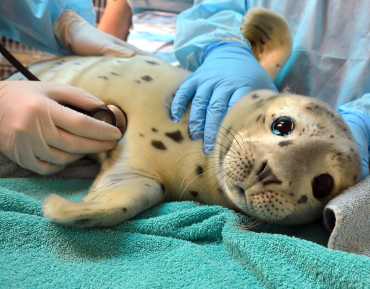
Yes, I want to save a life!
You’ll be giving sick and injured animals the best possible care at the Center’s state-of-the-art hospital. With your gift today, you are giving a patient a second chance at life in the wild.
See Our Latest News
{"image":"\/Animals\/Patients\/Harbor seals\/2020\/cropped-images\/hs-barnwood-by-bill-hunnewell-c-the-marine-mammal-center-315-0-3299-2577-1607370547.jpg","alt":"harbor seal Barnwood","title":"Last-Minute Gift Guide \u2013 Top Gifts that Give Back to Marine Animals","link_url":"https:\/\/www.marinemammalcenter.org\/news\/last-minute-gift-guide","label":"News Update","date":"2025-12-18 01:00:00"}

Last-Minute Gift Guide – Top Gifts that Give Back to Marine Animals
December 18, 2025
Read More{"image":"\/Animals\/Patients\/Hawaiian monk seals\/2025\/cropped-images\/b-ru72admission-to-ke-kai-ola112125photo-c-the-marine-mammal-center-noaa-permit-24359-0-364-1270-992-1766095407.jpg","alt":"A newborn Hawaiian monk seal pup with a black coat in rehabilitative care.","title":"Newborn Hawaiian Monk Seal Pup Now Receiving Care","link_url":"https:\/\/www.marinemammalcenter.org\/news\/newborn-hawaiian-monk-seal-pup-now-receiving-care","label":"Patient Update","date":"2025-12-18 01:00:00"}
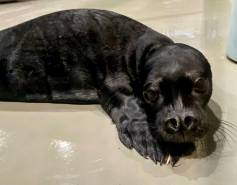
{"image":"\/Animals\/Patients\/Hawaiian monk seals\/2025\/cropped-images\/d-ru28release-exam-at-ke-kai-ola111025photo-by-giancarlo-rulli-c-the-marine-mammal-center-noaa-permit-24359-0-0-1270-992-1764620886.jpg","alt":"","title":"Bird Flu Vaccine Trial Offers Hope for Protecting Hawaiian Monk Seals","link_url":"https:\/\/www.marinemammalcenter.org\/news\/bird-flu-vaccine-trial-may-offer-hope-for-protecting-hawaiian-monk-seals","label":"News Update","date":"2025-12-01 08:13:00"}

Bird Flu Vaccine Trial Offers Hope for Protecting Hawaiian Monk Seals
December 1, 2025
Read More{"image":"\/Animals\/Patients\/Hawaiian monk seals\/2021\/hms-pp08-by-sheila-latta-c-the-marine-mammal-center-noaa-permit-18786.jpg","alt":"Hawaiian monk seal","title":"The New York Times: Inside the Bird-Flu Vaccine Trial for Monk Seals","link_url":"https:\/\/www.marinemammalcenter.org\/news\/the-new-york-times-inside-the-bird-flu-vaccine-trial-for-monk-seals","label":"In the News","date":"2025-12-01 01:00:00"}

The New York Times: Inside the Bird-Flu Vaccine Trial for Monk Seals
December 1, 2025
Read More